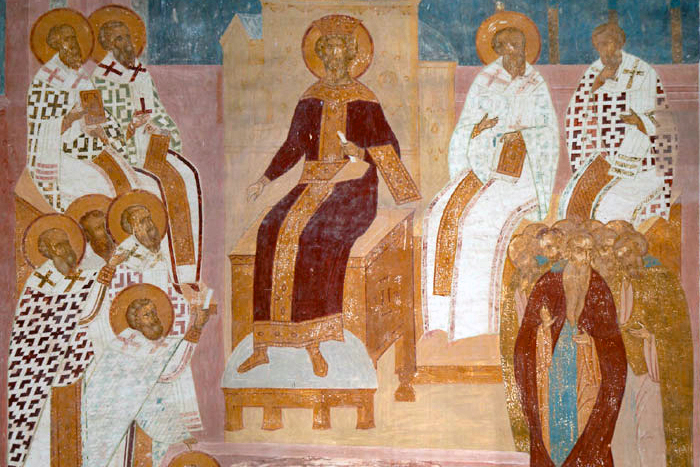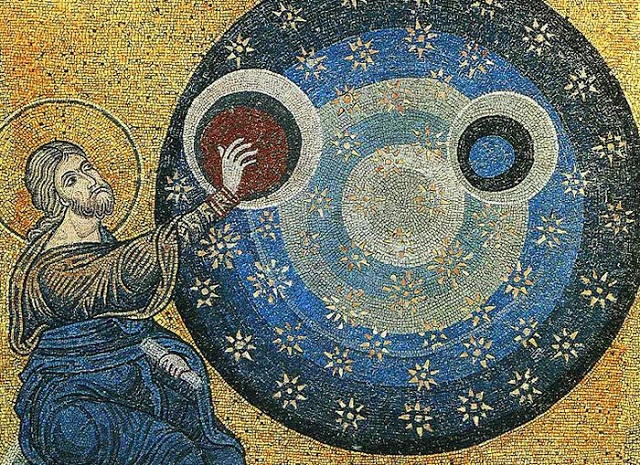
Wedding rings have a very long history. For instance, they are mentioned in Genesis, the first book of the Old Testament, “And Pharaoh said unto Joseph, See, I have set thee over all the land of Egypt. And Pharaoh took off his ring from his hand, and put it upon Joseph’s hand…” (Gen. 41:41, 42). According to this text, a ring symbolized that something or someone belonged to somebody else. Here we see that Joseph becomes one of Egyptian officials — a cog in the machine of Pharaoh’s power. This system confers certain power to him within the scope of his duties. The ring passed from the Pharaoh to Joseph symbolizes the confirmation of this pact.
We encounter a similar phenomenon — this time in a spiritual context — in the New Testament parable of the Prodigal Son: “And the son said unto him, Father, I have sinned against heaven, and in thy sight, and am no more worthy to be called thy son. But the father said to his servants, Bring forth the best robe, and put it on him; and put a ring on his hand, and shoes on his feet” (Luke 15:21, 22). That was how the Holy Fathers interpreted this passage:
The father is God. The son is the fallen human race. The best robe is that of the Baptism. The ring is the symbol of the restoration of the union between God and man. The shoes on his feet are the New Testament, the commandments and laws of which make it possible for us humans to walk, i.e., to live. Here, like in the Old Testament, a ring is a symbol of belonging and ownership. This time, it’s God who restores his image and likeness in the human being and re-adopts him as his son.
Wedding rings were first used in the Roman Empire. They were a visible sign of the civil contract between the newly-weds. It meant that the man now belonged to a certain woman, and the woman to a certain man. This tradition is alive even now. Rings are a symbol of belonging.

A priest is a person who belongs only to God, so he can not belong to anyone else. The Sacrament of Priesthood can be compared to the Sacrament of Matrimony in a certain sense. A nominee for priesthood has to walk around the Holy Table three times, just like the newly-weds, who walk around the central analogion with the temple icon or the icon of a feast in the nave. At this point, the chants sung during the Sacrament of Priesthood are the same as the chants sung during the Matrimony, namely: Holy Martyrs; Glory to You, O Christ Our God; Isaiah Rejoice… It symbolizes that the priest’s soul is married to God and forever belongs to him. It is the service of the Lord that will be the priest’s main purpose in the future. It is emphasized by the fact that a new priest is allowed to hold the paten with the Body of Christ after the Transubstantiation of the Holy Gifts. It is Jesus and only Jesus that the priest will serve throughout his whole life. This ministry bestows a lot of grace on the priest but it requires all his energy and time, too.
The sacred vestment that a new priest wears shows that our Lord Jesus Christ will cover him with his grace and act through his hands. A podriznik symbolizes purity, an epitrachelion symbolizes the gifts of the Holy Spirit that the priest uses to carry out his ministry and perform the Sacraments; the belt symbolizes the Lord’s power; the cuffs are a symbol of the Lord’s chains and the fact that God acts through the priest’s hands; the phelonion is a symbol of the Holy Shroud, which points at the Lord’s Passion and at the same time means that the priest is vested with Christ. This is an exalted and a terrifying ministry to be an intercessor between God and the people. It demands total commitment, self-denial, and dedication.
That is why a priest can marry only before he’s professed into priesthood. As soon as he is laid hands on, the new priest is dedicated to God. Of course, it doesn’t mean that a married priest can stop taking care of his family. He has to provide for his home church but this is his auxiliary task, the primary one being that of serving God.
This is why Russian priests don’t wear wedding rings. Their sign of belonging are their pectoral crosses. This is to Whom they fully belong.

Naturally, you may ask: how does a priest’s wife and children deal with it? It’s striking that (I’m judging by my personal experience now) the more zealous you are in your ministry, the better environment there is going to be in your family. The Divine grace miraculously pours into the priest’s family in abundance, binding it together with love.
So the priest’s spouse keeps his wedding ring. For instance, I’ve seen wives of some priests wear their husband’s rings on their fingers or necks, like a decoration.
Aside from what has been said, there is a technical side to the fact that Russian priests don’t wear rings. Crumbs of the Body of Christ or the particles taken out of prosphoras during the Proskomedia can get under the ring and later fall to the ground, God forbid. This is sacrilege.
Dear brothers and sisters, I dare hope that I’ve unveiled some secrets of our lives as priests. Believe me, the life of a priest is wonderful!
Perhaps, the most important impression that I have got out of my personal experience as a priest is that the Lord is really the Living I Am who revealed himself to Holy Prophet Moses in the Burning Bush. Every time I stand in front of the Holy Table during a Divine Liturgy or perform other Sacraments, I am convinced of it.
Translated by The Catalog of Good Deeds





Do Deacons follow the same practice?
As far as I know, this tradition concerns only priests.
Deacons do not wear their wedding rings in the altar (for all the reasons given in this article) and many do not wear them at all.
They don't? That surprises me because I know personally of at least two Orthodox priests who do wear wedding rings. One's in Oregon, the other is in Arizona. I know this because I attended the Oregon parish for 4 years and have been at my present AZ parish for 3 years. Mind, it wasn't until after WWII that men in general began to wear wedding rings. Before that, it was only the wife. Maybe the no wedding band thing is more common in Russia or Greece?
sorry, I should note that these are OCA parish priests. One's been married nearly 30 years. The other about 12 years. If that makes a difference.
In this particular article the author describes the ancient tradition that is common in Russian Orthodox Church. It is not a secret that there can be different traditions and cultural features in various local churches. Possibly, the ideas described above are just not common in case of OCA.
That could be the case. I was just surprised to read this. Mind, I've only been in the church 7 years, so I still have a lot to learn both of the general Church as well as the various jurisdictions and ethnic cultures that comprise Eastern Orthodoxy. Just the same I found the article quite educational.
The use of the word 'Transubstantiation' is a bit strange due to its definitive scholastic definition. The mentioning of "hold the paten" appears to be referring to the elevation, after which the deacon says things such as: "Bless, master, the Holy Bread." With the bishop or priest saying: "And make this Bread the precious Body of Thy Christ." And so on… so the use of that word doesn't make sense for more than just it's scholastic definition.